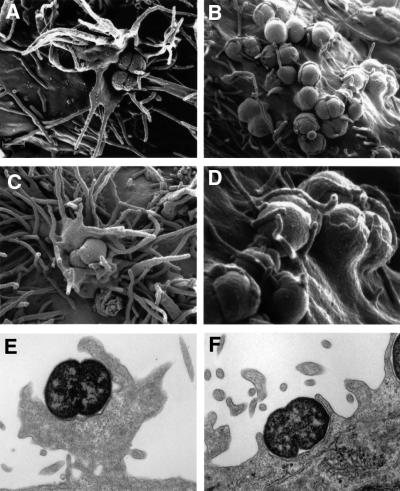Fig. 2. Neisseria gonorrhoeae N313 (Opa57) triggers different ultrastructural modifications of the cell surface in HeLa lines, depending on the expression of either CEACAM3 or CEACAM1. Subconfluent monolayers were infected with an m.o.i. of 100 for 30 min at 37°C. (A–D) SEMs of infected cells showing large cellular protrusions extending from the cell surface of HeLa-CEACAM3 (A and C) and tightly fitting pseudopods enclosing bacteria that adhere to HeLa-CEACAM1 (B and D). (D) shows a detail of (B). Interactions between N313 and a CEACAM6-expressing HeLa cell line were indistinguishable at the ultrastructural level from those with HeLa-CEACAM1 (not shown). (E and F) TEMs of infected HeLa-CEACAM3 (E) and HeLa-CEACAM1 (F). Images are representative of three independent experiments.

An official website of the United States government
Here's how you know
Official websites use .gov
A
.gov website belongs to an official
government organization in the United States.
Secure .gov websites use HTTPS
A lock (
) or https:// means you've safely
connected to the .gov website. Share sensitive
information only on official, secure websites.
